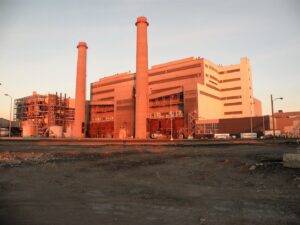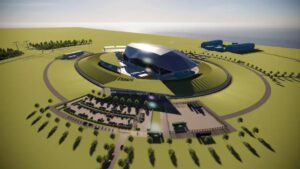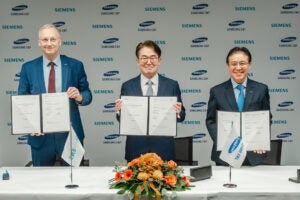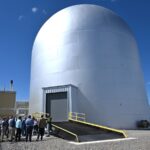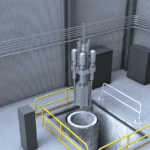
Nuclear microreactors developed separately by Westinghouse and Radiant are poised to become the first fueled designs tested at the Demonstration of Microreactor Experiments (DOME) facility—the world’s first dedicated microreactor test bed slated to open at Idaho National Laboratory (INL) in early 2026. The first fueled experiment is expected to begin as early as spring 2026.
The U.S. Department of Energy (DOE) unveiled its conditional selections for the pioneering experiments on July 1, calling them “the first of their kind in the world” and a key step to “fast-track the deployment of American microreactor technologies” amid growing demand for “more abundant, affordable, and reliable power.”
Etna, Pennsylvania–based Westinghouse will test its eVinci microreactor, a portable concept of up to 5 MWe that it is readying for the market by 2027. The commercial heat pipe–cooled microreactor is designed for broad applications ranging from powering remote communities to mining operations and data centers.
El Segundo, California–based Radiant Industries will test the Kaleidos Development Unit to advance the company’s commercial Kaleidos Battery microreactor design. Founded in 2019 by former SpaceX engineers, Radiant has been developing a 1.2-MWe high-temperature gas-cooled (HTGR) design, which will use TRISO fuel, a helium coolant, and a graphite moderator. “Kaleidos is designed to operate for five years before refueling and could provide reliable backup power to hospitals, military installations, and more,” INL noted.
First Experiments at DOME
The measure marks a big step for DOME, one of two new testbeds that INL is developing to support fueled testing of advanced reactor designs. As DOE officials have told POWER, the facility is intended to provide private-sector reactor developers with a flexible and secure platform to generate critical performance and safety data, validate systems under operational conditions, and produce technical evidence to support future licensing. Managed by the National Reactor Innovation Center (NRIC), the test bed is designed to fill a longstanding infrastructure gap between conceptual development and commercial deployment.
The DOE on Tuesday said it selected Westinghouse and Radiant to lead the first microreactor test campaigns at DOME through a competitive application process launched in 2023. Both companies were among three initial recipients—along with Ultra Safe Nuclear Corp.—of a combined $3.9 million in October 2023 under the DOE’s front-end engineering and experiment design (FEEED) program. That phase supported preliminary design, engineering, and safety documentation work required to prepare for eventual fueled testing.
In November 2024, the DOE awarded a second round of funding totaling $5 million, which allowed Westinghouse and Radiant to enter the detailed engineering and experiment planning (DEEP) phase. This next step includes the development of a Preliminary Documented Safety Analysis (PDSA)—a critical DOE prerequisite before reactor fabrication and installation at DOME. “Both companies are currently working through the multi-phase DOE authorization process to support the design, fabrication, construction, and testing of each fueled reactor experiment,” INL noted.
For now, the DOE estimates each DOME reactor experiment will operate up to six months. “The testing campaigns are self-funded by the applicants with the sequencing of experiments based on several criteria, including technology readiness, fuel availability, and a regulatory approval plan,” INL noted. “Both companies are expected to meet certain milestones throughout the process to maintain their allotted time in DOME and to ensure efficient use of the test bed.”
The agency formally closed the first round of applications for DOME on June 19, 2025. A second round of applications is expected to open in 2026. “The review process will be performed annually to consider new applicants, changing conditions, and DOE priorities,” the DOE said.
An End-to-End Testing Ecosystem
The DOME facility, which repurposes the iconic 80-foot-tall Experimental Breeder Reactor-II (EBR-II) steel-and-concrete containment structure, is being retrofitted with upgraded electrical, mechanical, and HVAC systems to host microreactors of up to 20 MWth. The power limit allows the DOE to classify DOME as a Hazard Category 2 nuclear facility, essentially allowing criticality testing while keeping the facility within regulatory thresholds for safety and environmental oversight. NRIC reports rapid progress in DOME’s construction since its kickoff in October 2023. Work has included control room installation, demolition, and retrofitting of the EBR-II structure, underground piping, equipment pad preparation, and fabrication of key penetrations and hatches. The test bed is “on track to receive its first experiment in early 2026,” INL said on Tuesday.
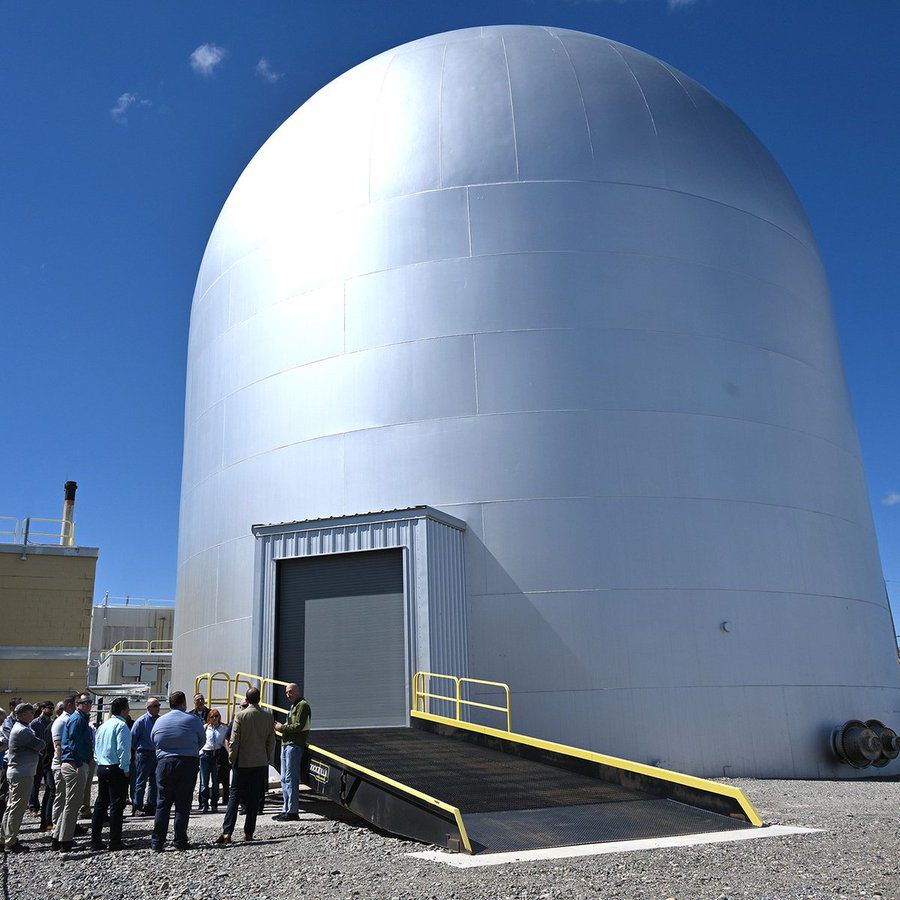
While DOME is designed to support experimental reactors using high-assay low-enriched uranium (HALEU), it includes infrastructure tailored for a range of reactor cooling methods and operational conditions. According to NRIC specifications, the facility will offer approximately 65 feet of floor space, a 15-foot by 17-foot hatch, and penetrations for process connections and primary cooling systems. It also features a 75-ton polar crane, integrated safety-class confinement, and a dedicated duct bank connecting to a separate developer control room. Installed environmental cooling will initially be rated at 300 kWth, with expansion capacity to 500 kWth. The facility includes 480V/400-amp electrical service, support areas for external reactor equipment, and compatibility with ISO-668 shipping containers up to 40 feet.
Alongside the DOME tests, NRIC is advancing the Laboratory for Operations and Testing in the United States (LOTUS), a state-of-the-art, non-fueled test bed designed to support experimental validation of advanced reactor systems, including those intended for space and maritime applications. The facility will be located at INL’s Materials and Fuels Complex to leverage the infrastructure of the historic Zero Power Physics Reactor building and offer a 50-foot-diameter radiological confinement cell with a recessed pit, overhead crane, and 13-by-13-foot access tunnel for equipment handling. NRIC says it will support reactor demonstrations with designed outputs of up to 500 kWth and enable real-world systems testing across a range of small modular reactor and microreactor concepts.
The first LOTUS user is anticipated to be the Molten Chloride Reactor Experiment (MCRE), a collaborative project led by Southern Co., TerraPower, and INL. Final design for LOTUS was completed in 2024 and construction could begin in fiscal year 2026. In addition to flexible thermal and control system configurations, LOTUS will provide developers with access to INL’s world-class support infrastructure for fuels synthesis, post-irradiation examination, and component analysis, making it another potential critical stepping stone for validating performance and safety of novel reactor concepts before progressing to fueled tests at facilities like DOME.
The DOE is meanwhile also advancing the Microreactor Application Research Validation and Evaluation (MARVEL) project at INL’s Transient Reactor Test Facility. MARVEL, a 20-kWe sodium-potassium–cooled microreactor, is slated to begin operations by late 2027 and will serve as a low-power test bed for integrated system demonstrations, including autonomous controls, process heat applications, and microgrid interfaces. In June, INL called for private-sector participation, inviting experiment proposals from developers, national labs, and stakeholders interested in leveraging the platform’s capabilities for near-term microreactor innovation.
—Sonal Patel is a POWER senior editor (@sonalcpatel, @POWERmagazine).


